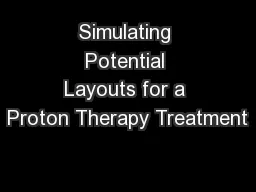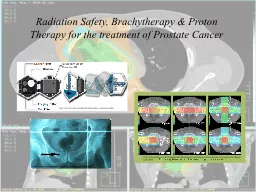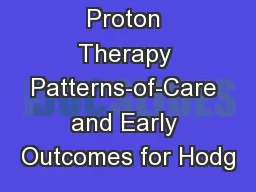PPT-Simulating Potential Layouts for a Proton Therapy Treatment
Author : pamella-moone | Published Date : 2016-10-25
Stuart PriceUniversity of Maryland Bruce Golden University of Maryland Edward Wasil American University Howard Zhang University of Maryland School of Medicine
Presentation Embed Code
Download Presentation
Download Presentation The PPT/PDF document "Simulating Potential Layouts for a Proto..." is the property of its rightful owner. Permission is granted to download and print the materials on this website for personal, non-commercial use only, and to display it on your personal computer provided you do not modify the materials and that you retain all copyright notices contained in the materials. By downloading content from our website, you accept the terms of this agreement.
Simulating Potential Layouts for a Proton Therapy Treatment: Transcript
Download Rules Of Document
"Simulating Potential Layouts for a Proton Therapy Treatment"The content belongs to its owner. You may download and print it for personal use, without modification, and keep all copyright notices. By downloading, you agree to these terms.
Related Documents














